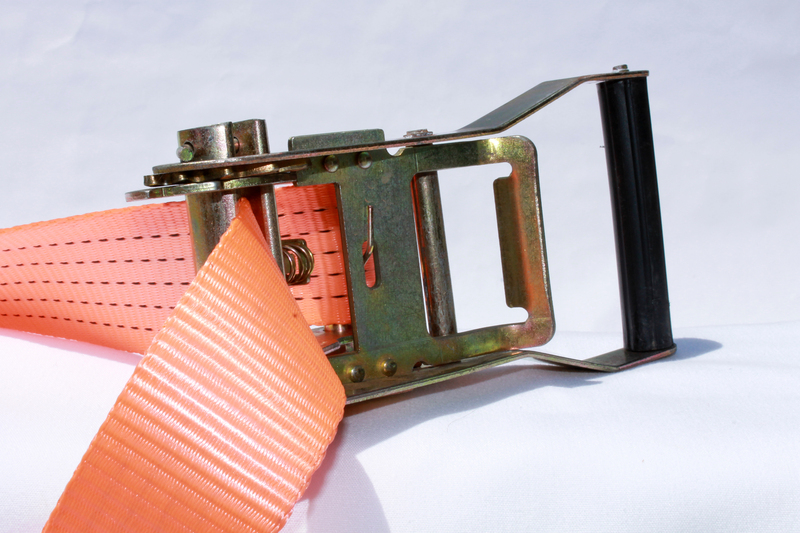Ultimate Sofa Care: Specialist Strategies for Long Storage
Posted on 17/05/2025
Ultimate Sofa Care: Specialist Strategies for Long Storage
When it comes to safeguarding your beloved sofa for a prolonged period, many homeowners make common mistakes that can lead to irreversible damage, unpleasant odors, or unsightly stains. In this comprehensive guide, you'll uncover expert sofa care strategies specifically designed for long-term storage. Whether you're storing your sofa during a home renovation, relocation, or a long trip abroad, these techniques will ensure your furniture emerges looking as good as new. Dive into these ultimate tips and keep your cherished lounge piece in pristine condition!
Why Proper Sofa Storage Matters
Your sofa is more than just a piece of furniture--it's a centerpiece of your living space, a spot for relaxation and family gatherings. Improper storage can significantly reduce its life span. Moisture, dust, pests, and sunlight are just some of the elements that threaten your sofa's integrity during extended storage. By following the specialist sofa storage strategies provided in this article, you can prevent damage and maintain both functionality and aesthetics.

Preparing Your Sofa for Long-Term Storage
1. Thoroughly Clean Your Sofa
- Vacuum every surface: Use a vacuum with an upholstery attachment to remove dust, debris, and pet hairs from cushions, crevices, and undersides.
- Spot clean stains: Use fabric-appropriate cleaners to treat any visible stains. For leather sofas, avoid water-based cleaners - opt for solutions specifically designed for leather maintenance.
- Allow for complete drying: Any moisture left on the sofa can lead to mildew or mold during storage. Let the sofa air dry thoroughly after cleaning.
Pro Tip: Consider professional upholstery cleaning for deep-set dirt, especially if you plan to store your sofa for longer than six months.
2. Disassemble if Possible
If your sofa allows for disassembly (removable legs, cushions, or arms), taking it apart can make transport easier and help avoid accidental damage. Store components separately, labeling them for straightforward reassembly.
3. Apply Fabric or Leather Protectants
Applying a suitable fabric protector or leather conditioner can act as a barrier against dust, moisture, and mold. For fabric sofas, consider a spray protectant appropriate for the fabric type. For leather, use conditioners that safeguard against drying and cracking.
Selecting the Ideal Storage Space
1. Choose Climate-Controlled Storage Units
When selecting a storage location, prioritize climate-controlled units. Temperature and humidity fluctuations can wreak havoc on both fabric and leather sofas. Excessive heat can dry out or warp upholstery, while moisture can promote mold growth.
- Recommended humidity: Aim for less than 50% relative humidity.
- Stable temperature: Keep within 15-25?C (59-77?F) for optimal protection.
2. Avoid Direct Sunlight
Direct or prolonged exposure to sunlight can cause fading, weakening, and brittleness of your sofa upholstery. Place your sofa away from windows or light sources in storage to preserve its original color and texture.
3. Elevate Off the Floor
Moisture can seep through floors, especially concrete in garages or basements. Use wooden pallets, plastic risers, or sturdy bricks to keep your sofa off the ground. This simple trick helps prevent exposure to water, insects, and dust.
Specialist Wrapping and Covering Techniques
1. Use Breathable Covers, Not Plastic
- Avoid plastic wrap: Though plastic may seem protective, it actually traps moisture and encourages mold growth.
- Opt for breathable fabrics: Use cotton sheets, moving blankets, or bespoke dust covers that allow air circulation while keeping dust away.
Specialist tip: For additional padding, wrap corners and delicate edges with bubble wrap, but ensure the main surface has a breathable layer.
2. Loosely Secure Covers
Secure your covers with loose ties or tapes. Tight wrappings can imprint marks onto upholstery over time and may restrict airflow, so always leave some slack.
Placing and Positioning Your Sofa in Storage
- Never store a sofa on its side or end: This can distort its shape, damage frames, and strain joints.
- Keep upright: Always place your sofa in its natural, upright position supported evenly.
- Allow space for airflow: Leave at least a few inches between your sofa and other items or the storage unit walls to ensure proper ventilation.
- Avoid stacking heavy items: Never place boxes or items atop your sofa, as this may deform cushions or frames.
Proactive Pest Prevention Strategies
1. Use Natural Repellents
Mice, insects, and moths can cause significant damage to fabrics and internal cushioning. Add natural pest deterrents such as cedar blocks, lavender sachets, or silica gel packets around and beneath the sofa.
2. Check Storage Unit Regularly
Even with optimal preparation, it's important to check your storage area periodically. Monitor for signs of pests, moisture, or fabric distress and act swiftly if detected.
Special Considerations for Leather and Antique Sofas
1. Leather Sofa Storage Techniques
- Condition thoroughly: Before storage, apply a generous coat of leather conditioner to prevent cracking, drying, or fading.
- Avoid tight wrapping: Leather needs to breathe. Cushion the sofa gently and cover with a natural fiber material.
- Maintain humidity: Leather responds poorly to dry air, so adding a moisture sachet nearby can help.
2. Antique and Vintage Sofa Preservation
- Consult a professional: Especially if your sofa is valuable or especially fragile, seek advice from furniture conservators on appropriate storage methods.
- Document pre-storage condition: Take photos and notes of any existing flaws for insurance and restoration reference.
- Wrap delicately: Use acid-free tissue paper or muslin cloth to protect fragile wooden or fabric areas.
Long-Term Sofa Maintenance: What to Do When in Storage
1. Periodic Inspections
If possible, visit the storage unit at least every few months. Check for:
- Mold or mildew development
- Condition of protectant covers
- Pest infestations
2. Rotate Cushions and Change Position
If storage space allows, gently fluff and rotate cushions to prevent compression. You may also shift your sofa's angle slightly to promote even wear and air exposure.
3. Reapply Conditioners or Protectors
Leather and some advanced fabric protectors require reapplication every 6-12 months for ongoing safekeeping. Bring necessary supplies during your inspection visits.
Expert Tips for Moving Your Sofa Out of Storage
- Unwrap carefully: Gently remove all layers of protection. Inspect your sofa for any signs of damage or pests before moving it.
- Air out: Let your sofa air out for a few hours in a well-ventilated area to eliminate any musty odors that may have accumulated.
- Clean lightly: Use a vacuum or a damp cloth (only if appropriate) to freshen up the fabric or leather before use.
- Condition again: For leather, consider another round of conditioning before reintroducing it to your living space.
Sofa Storage FAQ: What You Need to Know
How long can I safely store my sofa?
With specialized care for sofa storage, your sofa can remain in storage for well over a year without adverse effects. Regular checks and protective strategies are essential for longer periods.
Is it worth insuring my sofa during storage?
Furniture insurance can provide peace of mind, particularly for high-value or antique items. Many storage facilities offer insurance options--explore these to protect against unexpected incidents.
Can I stack other items on my sofa in storage?
Never place items on top of your sofa, especially heavy or rigid objects. This leads to deformation, indentations, and possible frame damage.
What if my sofa develops an odor after storage?
Musty odors can develop if airflow was restricted or covers trapped moisture. Air out thoroughly, sprinkle baking soda on cushions and vacuum it up after a few hours. For stronger odors, professional cleaning might be necessary.

Conclusion: Preserve Your Sofa for the Future
Whether your sofa is a modern modular or a cherished antique, ultimate sofa care for long storage is about more than just keeping it out of sight. Through meticulous preparation, a carefully chosen storage environment, and regular maintenance, you can protect your investment, maintain its comfort, and ensure it's ready to welcome you home. Use these specialist storage strategies to guarantee your sofa remains in top condition--no matter how long it's away from your living room.
Key Takeaways for Optimal Sofa Storage:
- Clean and dry your sofa intensively before storage
- Disassemble when possible for ease of transport and protection
- Select climate-controlled, well-ventilated storage
- Wrap with breathable covers, not plastic
- Elevate and position upright to maintain structure
- Monitor for moisture and pests throughout the storage period
- Unwrap, air, and recondition your sofa post-storage
For more furniture care and storage guides, stay tuned--protect your home, protect your comfort!
